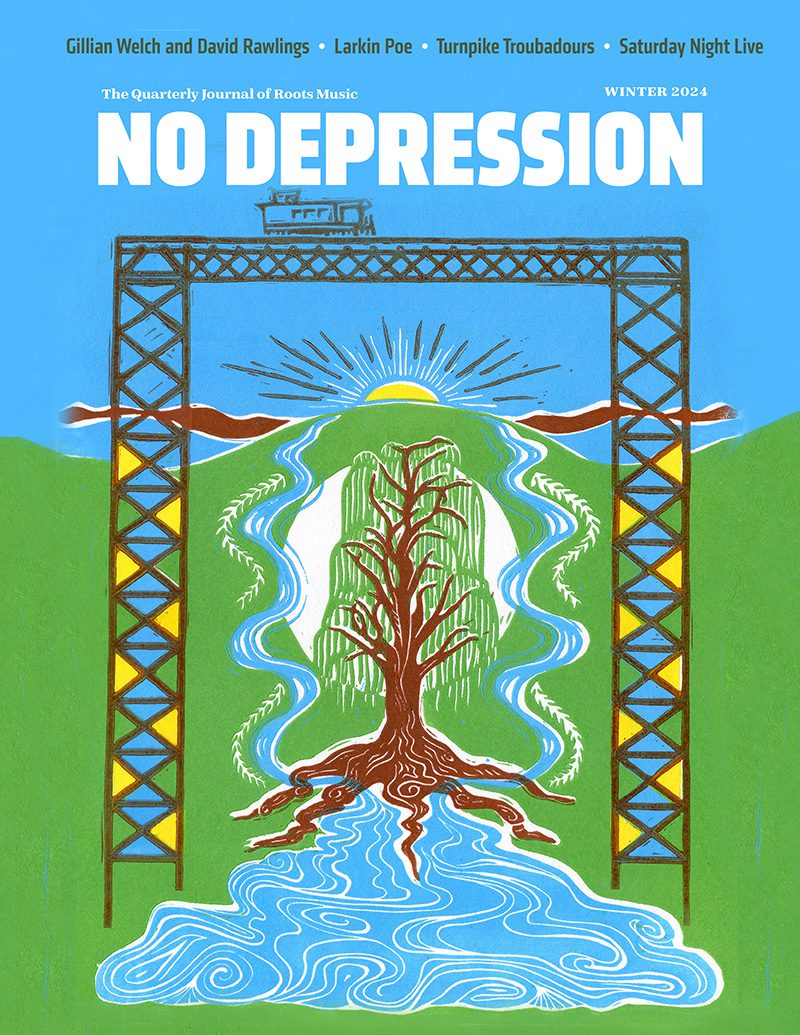Ten Years After O Brother : Measuring the Shockwaves
Neither the Coen brothers nor T Bone Burnett could have possibly foreseen the shockwaves that emanated from the soundtrack release of the film “O Brother Where art Thou”. A timely release to a nation fractured with doubt and a desire for authenticity spawned a ripple effect. Millions were affected, and a thousand string bands were launched reigniting interest in vital American folk traditions. Not bad for a 5 inch wide piece of polycarbonate.
A little background and context is in order. Joel and Ethan Coen approached T Bone Burnett to act as music producer for their loose retelling of Homer’s Odyssey set in Depression era Mississippi. T Bone delved into the archives and came up with a note perfect selection of early 20th century folk, blues, ballads and gospel. The album was released in December of 2000 and slowly started catching on amongst aficionados and the general public.
Sales were decent but not spectacular for the first few months, and surely no indication of what was to come. Why exactly did this selection of 15 songs resonate so strongly with people? Turn of the century introspection possibly or a hangover from a decade of dotcom greed? A pop and country music landscape beyond bleak, an audience yearning for real music, are all possible explanations for the disc’s eventual massive success. But one of the unspoken catalysts that broke the disc wide open were the September 11th attacks. These deeply traumatic events caused Americans to suddenly value an un-sexy and un-commercial art form like folk music as a spiritual salve. When the world appeared hostile and uncertain, scratchy early recordings collected by Harry Smith and the Lomaxes bound a wounded nation. Sales went through the roof in the winter of 2001 and the disc won multiple Grammy’s in 2002, including Album of the Year. Sales eventually reached over 7.5 million in the U.S.. A companion tour, “Down from the Mountain” sold out large venues across the nation as no one could get enough of the old high lonesome.
Country Radio said “Take a hike, we don’t care how much its sold, we’re not playing it” and tried to slam the door. The “Great Folk Scare” of the 21st century? Perhaps, but that’s missing the main point.
The real effects of O’ Brother lie not in units moved or Nashville’s cold rejections. The main result was the launch of countless young string bands who warmed their hands over this new found treasure trove of possibilities. Rather than picking up Korgs and sampling equipment, young nonconformist types caressed old banjos, dulcimers, and fiddles and began learning the tunes and traditions carefully protected and preserved by the tightknit Folk, Bluegrass and Old Timey communities.
Instead of viewing these young whippersnappers as competition, the music’s elders gladly embraced them, invited them to sit by the campfire, and taught them everything they knew. Artists and bands like Gillian Welch, Old Crow Medicine Show, Uncle Earl, Devil Makes Three, Crooked Still and countless others have indirect roots in this phenomenon. Everything from strict traditionalists to punk string bands erupted in an unprecedented revival of creativity. Young pickers dusted off old recordings, learned old tunes, wrote new ones to accompany them and hit the festival circuit. Lo Fi and field recordings were in. Pitch correction and overdubbing were out. Festivals multiplied like rabbits.
Mainstream country artists Dolly Parton, Patty Loveless and Marty Stuart dove in and released bluegrass centered discs. Nashville still resisted embracing its own roots, preferring instead to pimp every empty hat act it could.
In the end, the folks who were only in it for the trend moved on to form Gypsy Balkan bands and only the truly dedicated stuck with it. No one gets rich making folk music and bluegrass is very hard to play well so that filtered out three quarters of the problem right there. The string band scene in 2010 is as strong as ever with new bands coming up all the time. Young players are learning at a faster rate as the scene feeds on itself. The new crop of wunderkids are a good two to three years younger than they were just five years ago. A college age player like Sarah Jarosz is almost a veteran at this point.
Cultural touchstones are frequently disheartening. Mainstream media rarely produces anything that feels authentic. So when the Coen Brothers and T Bone reintroduced us to our own music heritage, we seized upon it like a drowning man does a life preserver. The strength of the movement is deeply inspiring and the bands that formed in its wake continue to nourish and enrich our culture. For those that braved the cold years when no one seemed to care, this renaissance validated their fervent belief in the value of this unique and wonderful music.


